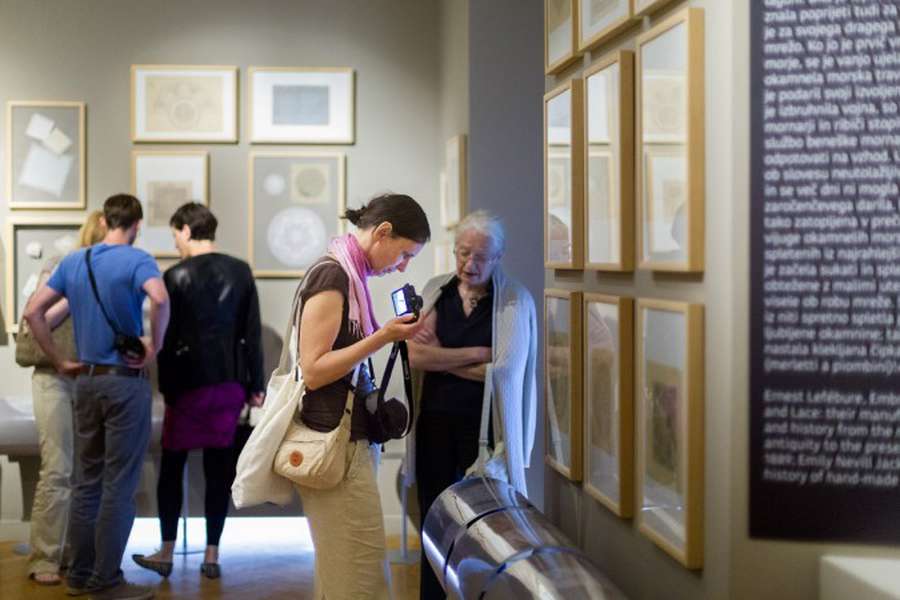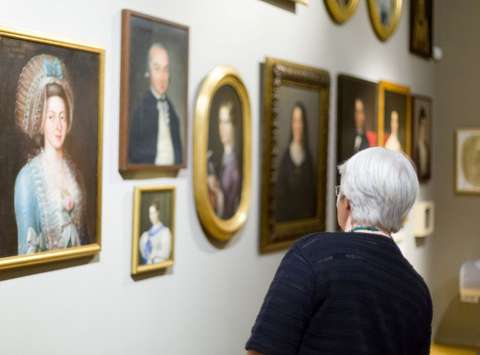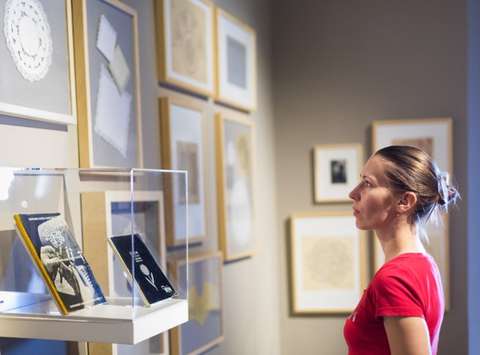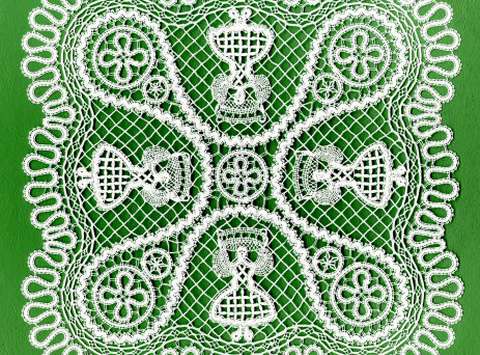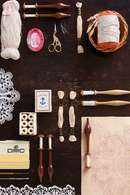Lace
The World Lace Congress in Ljubljana gave us the opportunity to present a historical overview and the rich heritage of lace. The exhibition also offers an insight into the contemporary development and usage of this unique and singular craft of human hands and minds within modern art and fashion design. The exhibition of bobbin and needle lace at the City Museum of Ljubljana ends on 8 January 2017.
Lace – a web-like decorative product from thread, made with a needle, by knitting, with bobbins, a crochet hook or a weaving shuttle. For centuries it was only made by hand and later also machine manufactured, lace has been mostly a woman's domain. Web-like, sewn, crocheted, bobbin lace, knitted, knotted; made from lax, silk, cotton, metallic threads, and artificial materials. At first only accessible to the highest strata of society, but from the 19th century onwards also accepted by lower social classes. A status symbol on one hand, a conveyor of prestige (for men!), of secular and sacral powers, while on the other hand a symbol of femininity; gentle and transparent, attractive in its reveal…
The 17th World Congress of the International Bobbin and Needle Lace Organisation (OIDFA), which took place in Ljubljana between the 24 and 26 of June 2016, and a rich history and heritage of Lace in Slovenia came together to create the temporary exhibition Lace. The biennial congress, attended by experts and designers as well as lace-makers from 37 countries, was also enriched by the lecture on the heritage of bobbin lace in Ljubljana by our curator Mojca Ferle, head of urban ethnology at the MGML and of the institution’s textile collection.
A new monograph titled Lace: one woman's pittance, another woman's prestige, published directly before the congress by the MGML (editor: Mojca Ferle, editorial board: Ana Pokrajac Iskra and Irena Žmuc) accompanies the exhibition. The monograph created a "much more comprehensive image of the history of needle and bobbin lace in Slovenia", as written in the review by Dr Marija Stanonik, PhD. Her review also highlights the important discovery of the monograph, namely that "parallel to Idrija, Ljubljana also developed as an important bobbin lace hub. According to Valvasor it even predates Idrija, as bobbin lace in Ljubljana was already mentioned before 1689". The monograph can be bought at the shop of the City Museum of Ljubljana. The price is € 25.
Alongside the congress, three exhibitions on the topic of lace also opened in Ljubljana. The City Museum of Ljubljana is thus inviting you with the exhibition Lace (on display until 2 October 2016), which offers a historical overview and an in-depth view into the tradition of (Ljubljana's) lace, but also includes lace as part of contemporary art and fashion design. The exhibition InterLACEd, displayed at the Slovene Ethnographic Museum, offers a wealth of laces and lace adorned objects from various parts of Slovenia, as well as from museum and private collections. The third exhibition is at the National Museum of Slovenia, where the oldest lace from Slovenia, dated to the 17th century, is currently on display. The lace was found inside the tomb of Janez Vajkard Valvasor.
Location
Gosposka 15
1000 Ljubljana
Information and reservations:
T: +386 1 2412 500
T: +386 1 2412 506
E- mail: info@mgml.si, prijava@mgml.si
Opening hours
Tuesday–Sunday: 10.00–18.00
Mondays, 1 January, 1 November and 25 December: Closed
Tickets
Permanent exhibition Ljubljana. History. City. (basement and 2nd floor)
Solo visit: € 8 / reduced (children from the age of 7, students, over 60, unemployed, disabled): €6
Family ticket: 18€
Public guided tour: € 9.00 / reduced: € 7.00
Children up to the age of 6, ICOM, PRESS, SMD, disabled companions, tourist URBANA, licensed tourist guide: free of charge
News
Honouring the bearers of the units Bobbin lace-making in Slovenia and the Art of dry stone walling, knowledge and techniques, which were both inscribed on the UNESCO Representative List of the Intangible Cultural Heritage of Humanity.
